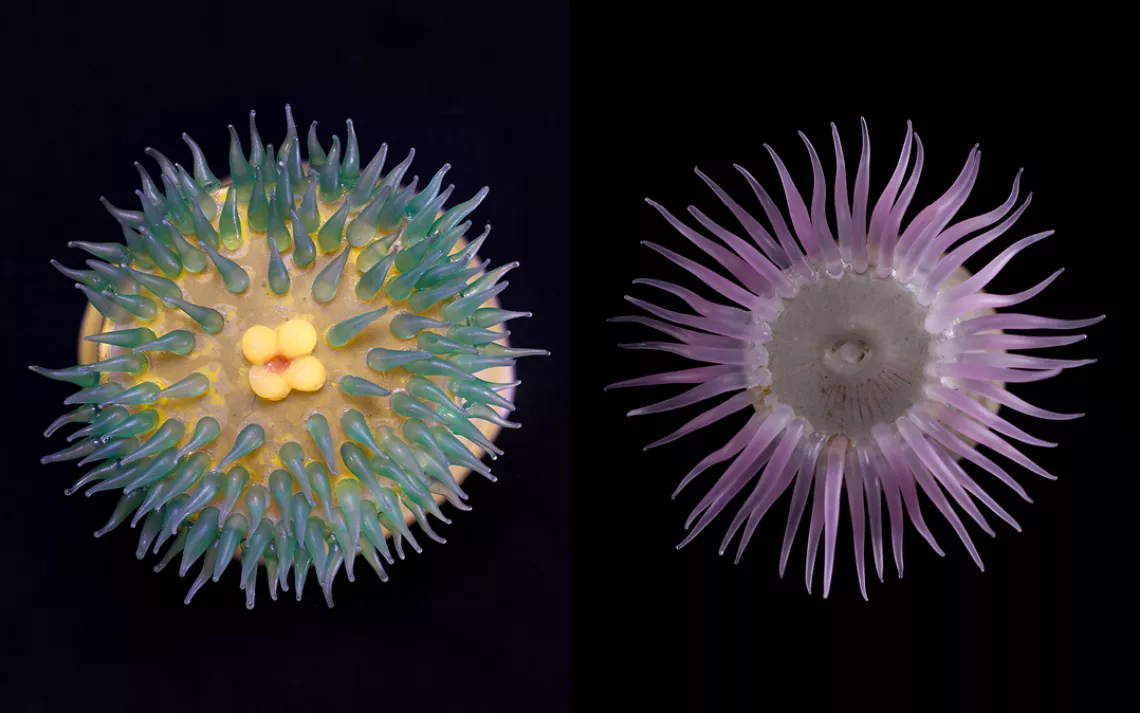 Several birthdays ago my parents gave me this glass octopus dish. I like it a lot and always keep it in a place where I see it regularly. And now I have a new appreciation for it knowing that there’s a long tradition of sea animals made of glass. Specifically there’s an exhibit right now at the Mystic Seaport Museum in Connecticut of marine invertebrate figures made by a father and son, Leopold and Rudolf Blaschka, in the mid-nineteenth century. The amazing thing is these weren’t decorative figures. They were intended to be lifelike reproductions to be used by scientists to study the forms and anatomy of marine invertebrates.
Several birthdays ago my parents gave me this glass octopus dish. I like it a lot and always keep it in a place where I see it regularly. And now I have a new appreciation for it knowing that there’s a long tradition of sea animals made of glass. Specifically there’s an exhibit right now at the Mystic Seaport Museum in Connecticut of marine invertebrate figures made by a father and son, Leopold and Rudolf Blaschka, in the mid-nineteenth century. The amazing thing is these weren’t decorative figures. They were intended to be lifelike reproductions to be used by scientists to study the forms and anatomy of marine invertebrates.
What’s really interesting to me is they were working in Germany and produced thousands of these figures, a lot of them quite small—apparently life size—at about the same time a home aquarium craze was sweeping Victorian England. In the fall of 1846 Lady Anna Thynne (1806-1866) returned to her home in Westminster with some living corals she’d collected on a trip to Torquay. After aerating the water by hand and having barrels of seawater shipped to her home she tried adding plants and some other animals to her jars. This was how she created the first home aquariums, keeping specimens alive in her home for several years and eventually publishing a scientific paper of her observations, which ain’t bad for a Victorian housewife with no formal education. She even inspired the famous naturalist Philip Henry Gosse to create the Fish House at the London Zoo, as well as making marine aquariums popular fixtures in Victorian homes.
All this is possible because of glass which is made from sand, the tiny, broken pieces of corals and the shells of other marine animals.
And some of the Blaschka models really do look like living animals—you can check out 3-D scans of a few here. Others look like genuine works of art, like their model of a blue sea dragon (Glaucus atlanticus). If you’ve ever seen one of these, though, you know that’s really what they look like—the model is an eerily accurate interpretation. There’s no better inspiration for art than nature itself.

Source: Brooklyn Rail







Those are so beautiful. It’s always amazing to me that things so delicate can survive as long as they do
There are a few damaged ones out there, and there have been some attempts at restoration, which is pretty delicate work, but, yes, it is incredible that any of these delicate glass sculptures survived. I’m sure they’ve been moved around quite a bit.
These reminded me of the glass flowers exhibit I saw many times at Harvard — beautiful, lifelike, artistic, breathtaking. Thanks for the artistry you share on your blog, Chris.
That’s fascinating, Ann–Leopold and Rudolf Blaschka also made the flowers in Harvard’s collection, representing more than 780 species, and apparently also used for scientific study of plants that couldn’t be preserved or cultivated in Massachusetts at the time. Thank you for enlightening me about just how far their range extended.